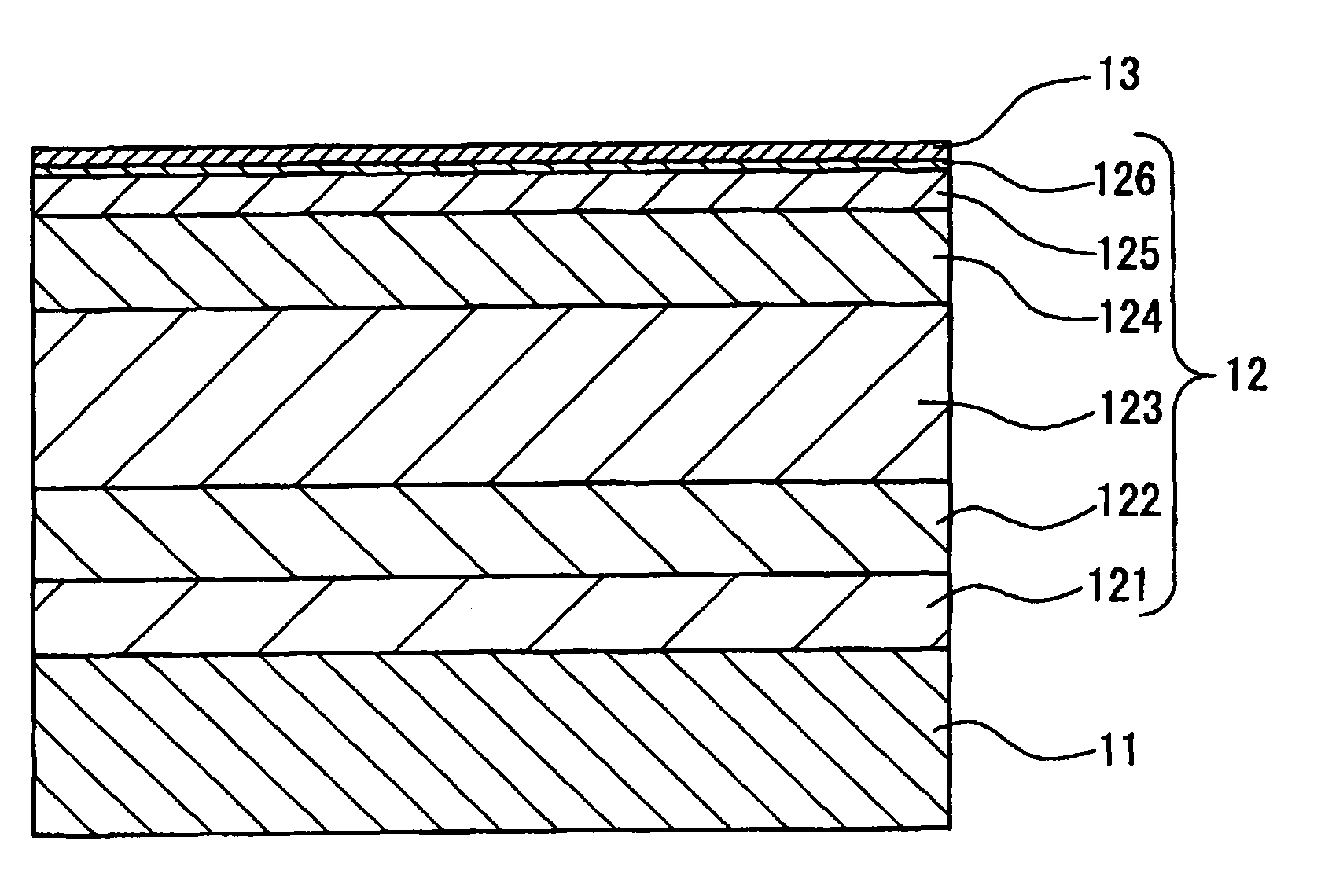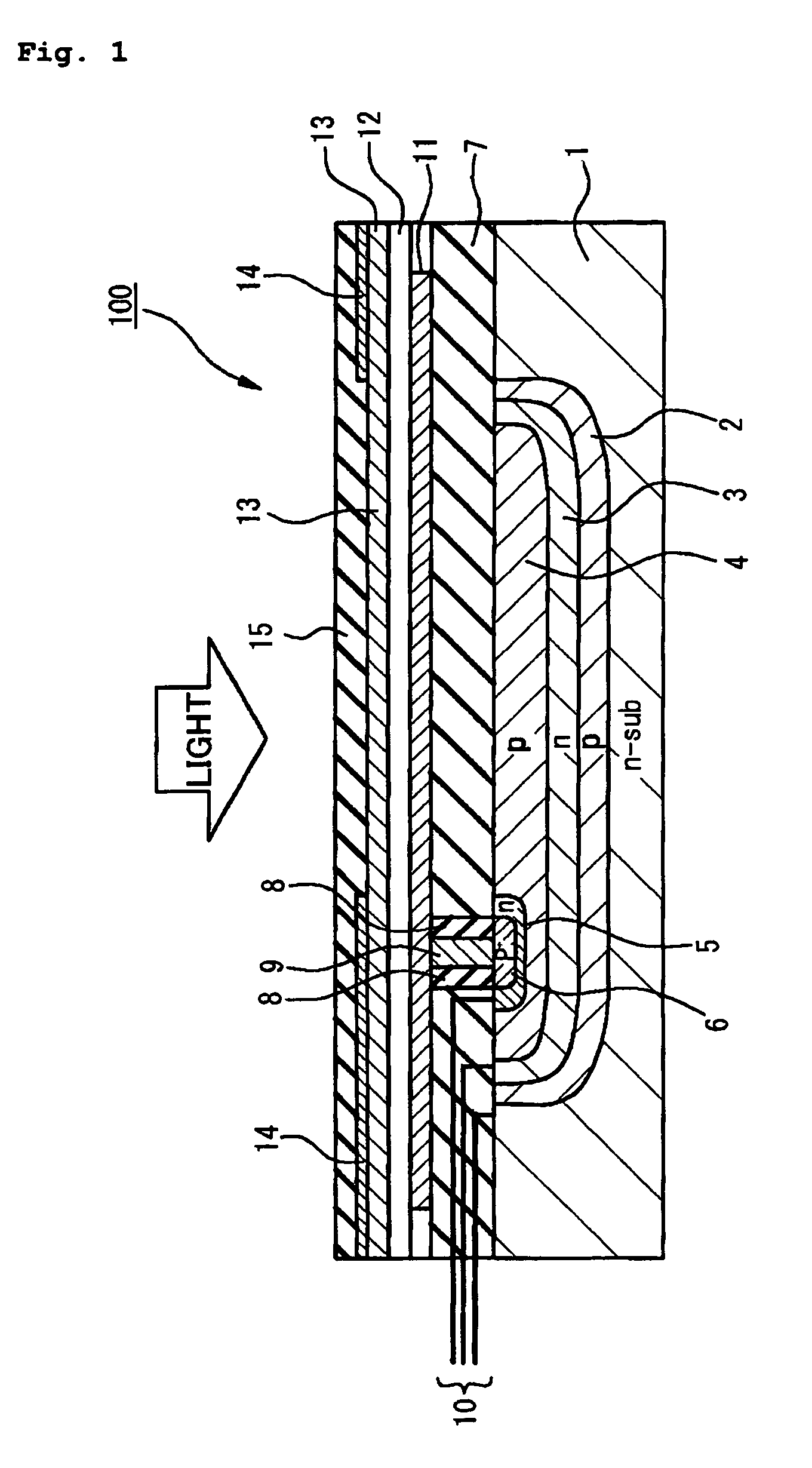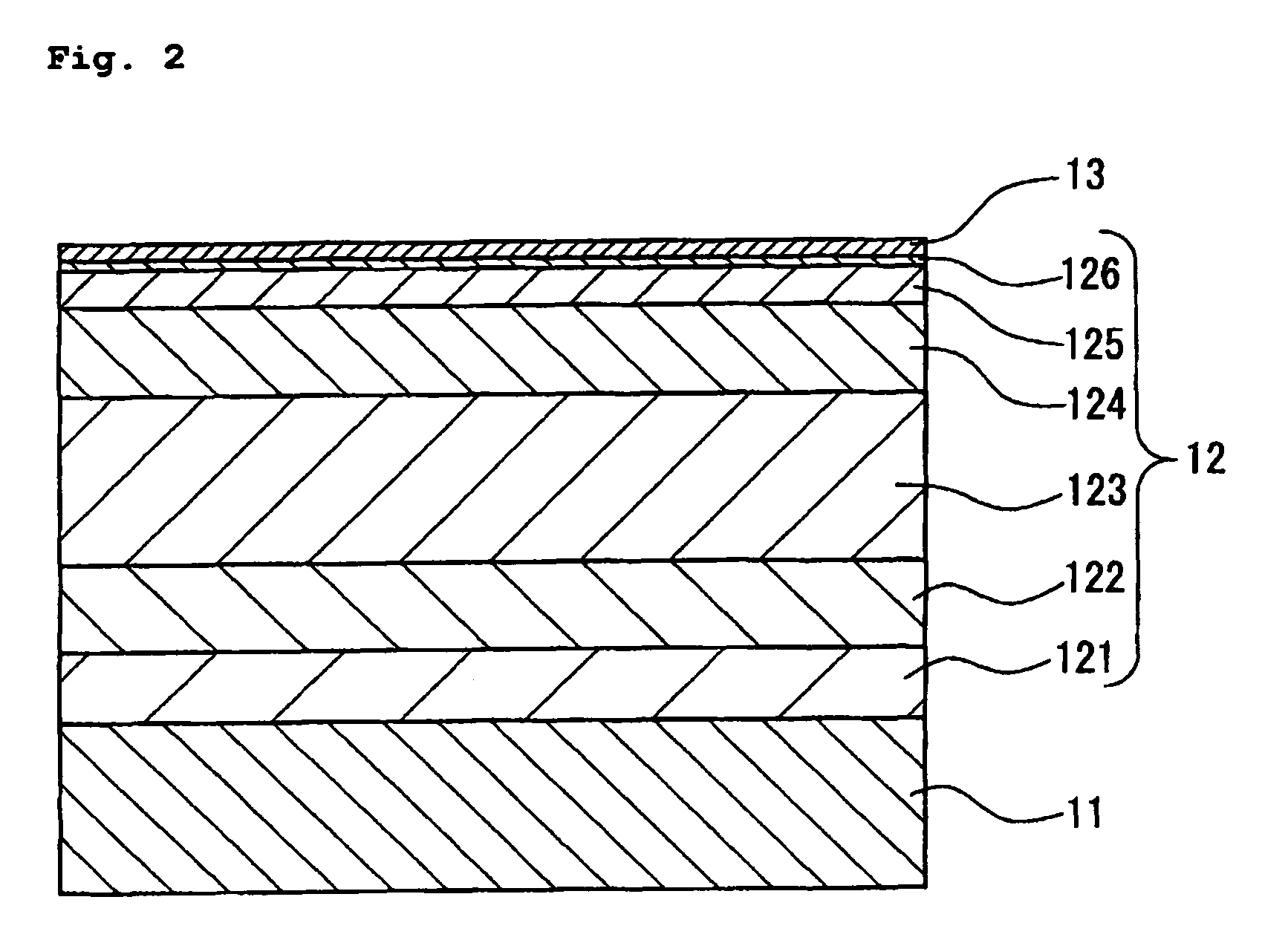Photoelectric conversion device and solid-state imaging device
a conversion device and photoelectric technology, applied in the direction of picture signal generators, television systems, radio control devices, etc., can solve the problems of reducing the efficiency of photoelectric conversion, limiting the thickness of the photoelectric conversion layer, and lowering the sensitivity of the device, so as to prevent the sensitivity lowering and broaden the spectral sensitivity
- Summary
- Abstract
- Description
- Claims
- Application Information
AI Technical Summary
Benefits of technology
Problems solved by technology
Method used
Image
Examples
first embodiment
[0047]FIG. 1 is a cross-sectional schematic view of a portion of one pixel of a solid-state imaging device for explaining a first embodiment of the invention. FIG. 2 is a cross-sectional schematic view of a photoelectric conversion layer as illustrated in FIG. 1. In this solid-state imaging device, a plural number of the one pixel as illustrated in FIG. 1 is disposed in an array state on the same plane, and one pixel data of image data can be produced by a signal as obtained from this one pixel.
[0048]One pixel of a solid-state imaging device 100 as illustrated in FIG. 1 is configured to contain a photoelectric conversion part which is made of an n-type silicon substrate 1, a transparent insulating layer 7 as formed on the n-type silicon substrate 1, a first electrode layer 11 as formed on the insulating layer 7, a photoelectric conversion layer 12 as formed on the first electrode layer 11, and a second electrode layer 13 as formed on the photoelectric conversion layer 12; a light-sh...
second embodiment
[0113]In this embodiment, the inorganic layer having a configuration as illustrated in FIG. 1 which is described in the first embodiment is prepared in such a manner that two photodiodes are not stacked within the n-type silicon substrate but that two photodiodes are arranged in a direction vertical to an incident direction of the incident light, thereby detecting lights of two colors within the n-type silicon substrate.
[0114]FIG. 3 is a cross-sectional schematic view of a portion of one pixel of a solid-state imaging device for explaining a second embodiment of the invention.
[0115]One pixel of a solid-state imaging device 200 as illustrated in FIG. 3 is configured to contain a photoelectric conversion part which is made of an n-type silicon substrate 17, a first electrode layer 30 as formed in an upper part of the n-type silicon substrate 17, a photoelectric conversion layer 31 as formed on the first electrode layer 30, and a second electrode layer 32 as formed on the photoelectric...
third embodiment
[0127]A solid-state imaging device of this embodiment is configured such that the inorganic layer having a configuration as illustrated in FIG. 1 which is described in the first embodiment is not provided and plural (three in this instance) photoelectric conversion layers are stacked in an upper part of the silicon substrate.
[0128]FIG. 4 is a cross-sectional schematic view of a portion of one pixel of a solid-state imaging device for explaining a third embodiment of the invention.
[0129]A solid-state imaging device 300 as illustrated in FIG. 4 is configured such that an R photoelectric conversion part containing a first electrode layer 56, a photoelectric conversion layer 57 as stacked on the first electrode layer 56 and a second electrode layer 58 as stacked on the photoelectric conversion layer 57; a B photoelectric conversion part containing a first electrode layer 60, a photoelectric conversion layer 61 as stacked on the first electrode layer 60 and a second electrode layer 62 as...
PUM
| Property | Measurement | Unit |
|---|---|---|
| work function | aaaaa | aaaaa |
| light transmittance | aaaaa | aaaaa |
| angle | aaaaa | aaaaa |
Abstract
Description
Claims
Application Information
 Login to View More
Login to View More - R&D
- Intellectual Property
- Life Sciences
- Materials
- Tech Scout
- Unparalleled Data Quality
- Higher Quality Content
- 60% Fewer Hallucinations
Browse by: Latest US Patents, China's latest patents, Technical Efficacy Thesaurus, Application Domain, Technology Topic, Popular Technical Reports.
© 2025 PatSnap. All rights reserved.Legal|Privacy policy|Modern Slavery Act Transparency Statement|Sitemap|About US| Contact US: help@patsnap.com



